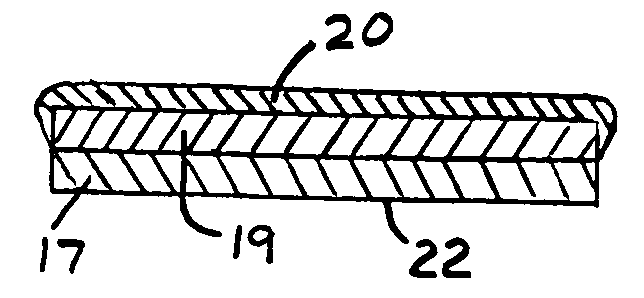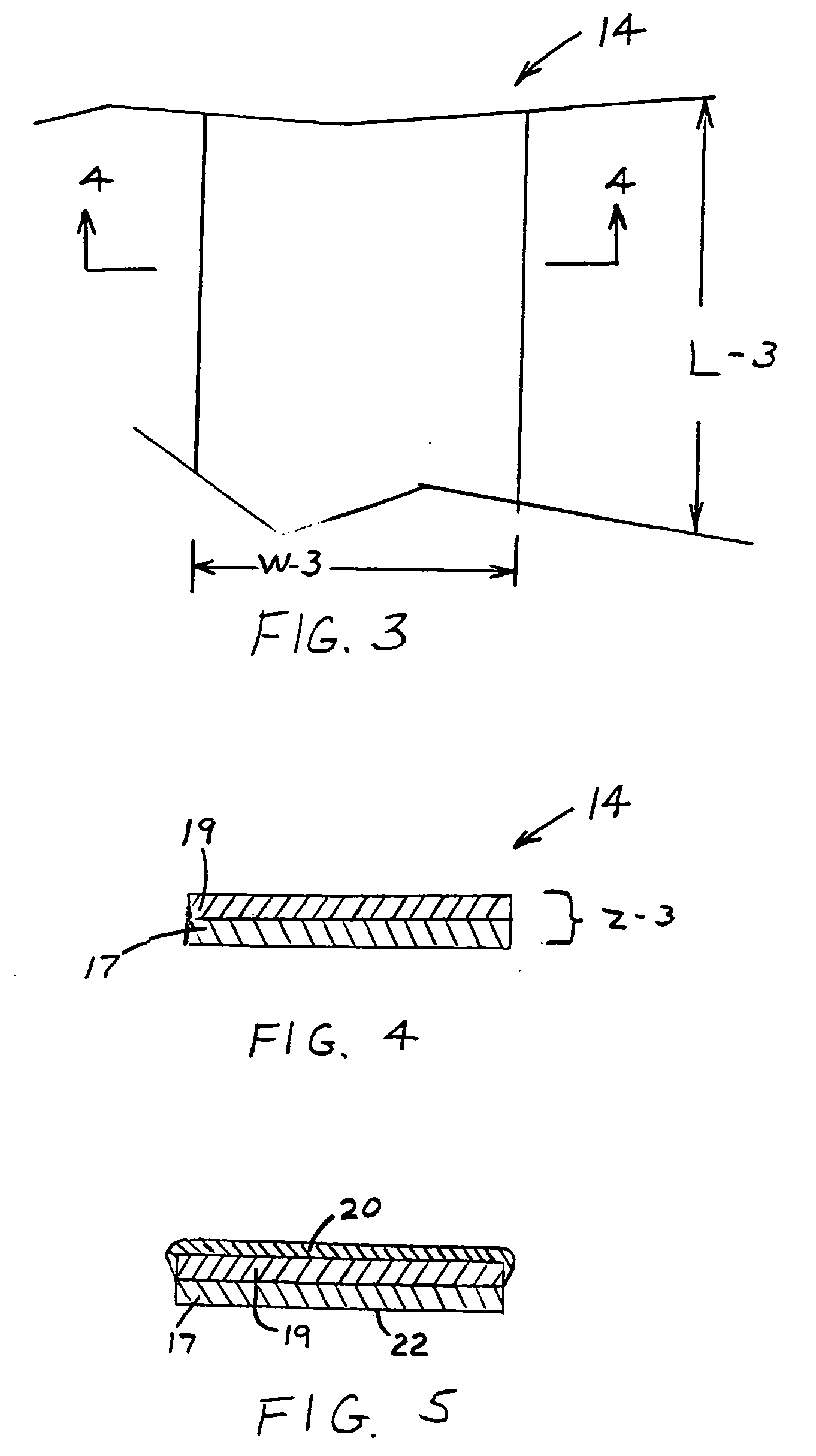This approach can be design limited to essentially two-dimensional surfaces.
The “
electroless plating” process employed with conventional plating on plastics comprises many steps involving expensive and harsh chemicals.
This increases costs dramatically and involves environmental difficulties.
The process is also sensitive to
processing variables used to fabricate the plastic substrate, limiting the applications to carefully fabricated parts and designs.
Deposition speed, equipment utilization, deposit integrity and chemical cost often
restrict deposits to these relatively small thicknesses.
Another limitation is the restricted types of metals that can be applied with these processes.
This often entails manual labor and added cost.
However, the inventor is not aware of the continuous
electroplating of plastics having achieved any significant commercial success to date.
One of the primary reasons for this is the complexity and cost associated with conventional
electroplating of plastic.
The “
electroless plating” process employed with conventional plating on plastics comprises many steps involving expensive and harsh chemicals.
This increases costs dramatically and involves environmental difficulties.
The process is also very sensitive to
processing variables used to fabricate the plastic substrate, limiting the applications to carefully fabricated parts and designs.
Furthermore, the multiple process steps are often not conducive to a continuous
processing environment.
For example, transporting a web or film through multiple baths increases problems associated with cross
contamination etc.
Yet another problem is that the electroless process tends to be relatively slow in nature.
Multiple performance problems thwarted these attempts.
However, because of
fiber separation (holes) such a composite might not exhibit consistent “microscopic” resistivity.
The first is the combination of fabrication difficulty and material property deterioration brought about by the heavy filler loadings often required.
A second is the high cost of many conductive fillers employed such as silver flake.
Another obstacle involved in the electroplating of electrically conductive polymers is a consideration of adhesion between the electrodeposited
metal and polymeric substrate (
metal / polymer adhesion).
In some cases such as
electroforming, where the electrodeposited
metal is eventually removed from the substrate, metal / polymer adhesion may actually be detrimental.
However, in most cases sufficient adhesion is required to prevent metal / polymer separation during extended environmental and use cycles.
However, here the metal particles are generally encapsulated by the resin binder, often resulting in a resin rich “
skin”.
An additional major obstacle confronting development of electrically conductive polymeric resin compositions capable of being directly electroplated is the initial “bridge” of electrodeposit on the surface of the electrically conductive resin.
However, if the
contact resistance is excessive or the substrate is insufficiently conductive, the electrodeposit current favors the rack tip to the point where the electrodeposit will have difficulty bridging to the substrate.
Moreover, a further problem is encountered even if specialized
racking successfully achieves electrodeposit bridging to the substrate.
The polymeric substrate can be relatively limited in the amount of electrodeposition current which it alone can convey.
In a fashion similar to the bridging problem discussed above, the electrodeposition current favors the electrodeposited metal and the lateral growth can be extremely slow and erratic.
This restricts the size and “growth length” of the substrate conductive pattern, increases plating costs, and can also result in large non-uniformities in electrodeposit integrity and thickness over the pattern.
These factors of course work against achieving the desired result.
However, attempts to make an acceptable directly electroplateable resin using the relatively small metal containing fillers alone encounter a number of barriers.
First, the fine metal containing fillers are relatively expensive.
The loadings required to achieve the particle-to-particle proximity to achieve acceptable
conductivity increases the cost of the polymer / filler blend dramatically.
The metal containing fillers are accompanied by further problems.
They tend to cause deterioration of the mechanical properties and processing characteristics of many resins.
This significantly limits options in resin selection.
A required heavy loading of metal filler severely restricts ability to manipulate processing properties in this way.
A further problem is that metal fillers can be
abrasive to processing machinery and may require specialized screws, barrels, and the like.
Finally, despite being electrically conductive, a simple metal-filled polymer still offers no mechanism to produce adhesion of an electrodeposit since the metal particles are generally encapsulated by the resin binder, often resulting in a non-conductive resin-rich “
skin”.
For the above reasons, fine
metal particle containing plastics have not been widely used as substrates for directly electroplateable articles.
However, the rates of electrodeposit coverage reported by Adelman may be insufficient for many applications.
Despite the multiple attempts identified above to dramatically simplify the plastics plating process, the current inventor is not aware of any such attempt having achieved recognizable commercial success.
 Login to View More
Login to View More  Login to View More
Login to View More 


